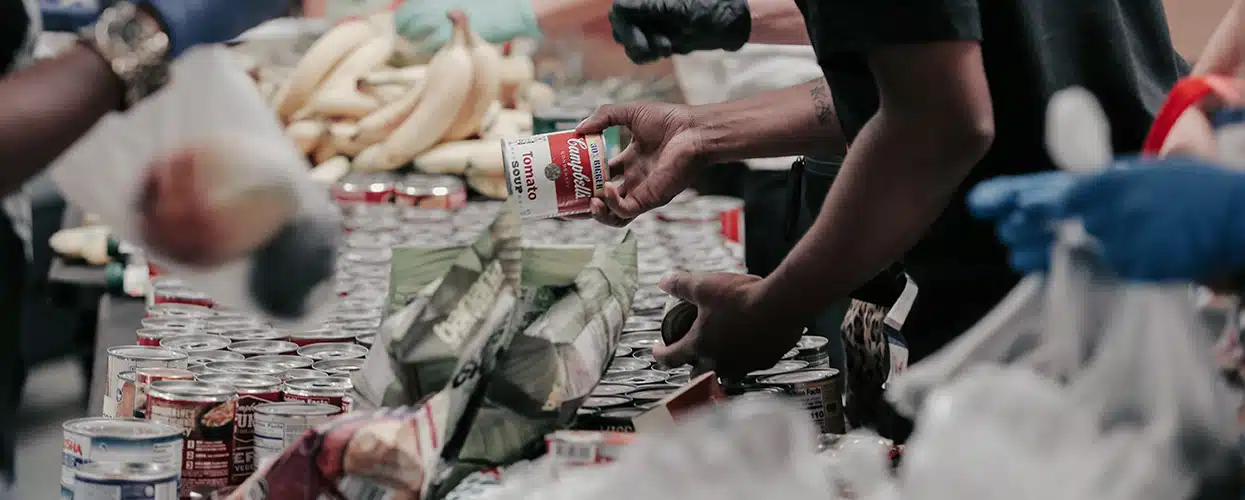Unlocking The Power Of A Donor Thank You: Feeding America's Approach



Thanking donors well is an essential aspect of fundraising that is often done just once—when the donor makes a gift, or, worse, it’s overlooked entirely. Aaron LaMonica-Weier, Sr. Manager, Direct Marketing Fundraising Services, long-time staff of the national nonprofit Feeding America, knows better. Aaron and his team have designed a donor thank you process that’s an ongoing practice integrated into the fundraising culture at Feeding America. Aaron knows that by creating a donor experience that goes beyond one transaction, you can inspire a deeper connection that will impact your mission for years to come.
Feeding America’s mission is to advance change in America by ensuring equitable access to nutritious food for all. They support a network of 200 food banks and 60,000 food pantries and meal programs nationwide. Many of their partnerships respond to food insecurity concerns and disaster relief efforts. Their network reaches children, seniors, and families no matter where they live or spend time.
They seek “an America where no one is hungry.”
Aaron and his team provide technical support for the fundraising and direct marketing efforts of the agency partners, especially to support the 200 food banks.
Aaron stressed how varied the food banks are: “Food Banks are not just how we’ve always thought of them, they are customized by region.” For example, he recently visited the San Antonio Food Bank located in San Antonio, TX. There, they welcome local hunters to donate specific, legally tagged, wild game meat, including deer, and they’ve designed an FDA-approved butchering process to package the meat for community members who select that food option. “It’s popular,” Aaron shared.
Feeding America, originally founded in 1979 as a faith-based organization, is headquartered in Chicago, IL, a central hub of the food industry. In 2021 it had an annual budget of $4.1 billion with net assets of $578 million. Founder John van Hengel developed the concept of food banking when he was a soup kitchen volunteer. The Feeding America National Organization relies on individual, corporate, and foundation support. Charity Navigator has awarded Feeding America a four-star rating for ten consecutive years. More than 98% of all donations go directly to feeding programs for people facing hunger.
Here are the guiding principles for Feeding America’s donor thank you process:
Aaron pointed out that, “While the national Feeding America office provides guidance on which components the donor thank you process should contain, there are 200 different thank you processes unique to each of the 200 food banks, and that’s just fine because each member of the Feeding America network is independent.”
Aaron also knows that constant quality improvement must be included in all their work as there’s always room for improvement.
When asked about the ultimate point of paying attention to the donor thank-you process, Aaron said, “Retention. Thanking a donor well increases donor retention multiple times. There’s nothing better than that.”
Feeding America advises using a multi-pronged direct marketing approach that includes and integrates direct mail, personal phone calls (including telemarketing), texting, and video.
Multichannel coordination is essential so that the donor isn’t sent competing messages. Aaron points out that only 34% of their food banks have a staff focused on digital services, but 85% work with a direct marketing vendor.
Aaron defines digital as integrating the website donation page, with digital paid ads, organic social media, with occasional infusions of peer-to-peer giving. While Artificial Intelligence (AI) is being developed for use in fundraising, most food banks have yet to integrate it into their strategies.
Direct mail had been Feeding America’s top revenue source, and while it continues to perform well, digital giving surpassed direct mail during the COVID-19 pandemic. We asked Aaron about Feeding America’s current commitment to direct mail. He said, “Direct Mail’s role is changing, and how we use it is shifting and adapting to the power of online giving. Feeding America’s direct mail performance has stayed consistent, while digital has grown faster. But it’s the mail piece that often drives people to give online, so it’s all connected.”
All of these intersections make it possible for Feeding America to streamline their direct marketing efforts.
Aaron has been in regular discussions with Feeding America network food banks about adding a QR code to the direct mail exterior envelope in case the donor doesn’t even want to open the piece.
Texting donors is a more customized approach, so Aaron taps network members directly to learn more about their readiness for texting before sharing his guidance with them.
Most Executive Directors in the network make regular calls to their top donors, a practice encouraged by the national office. They also make sure to optimize their partner agency website giving page. And they often feature monthly giving programs during year-end giving drives to boost giving, and work toward more predictable and reliable income flows.
Overall, Aaron’s approach is to meet partner agencies where they are, but not leave them there if there is a reasonable path forward to advance their fundraising efforts.
Here are other best practices to thank and inspire your donors:
We asked Aaron what he thought about the field he works in, he said, “I’m inspired and impressed with the food support networks that exist. They’re creative, and they care about their communities. In every shared resource, they aim not just to make a difference, but to make a lasting impact.”
“We are actively feeding America!”
Aaron wanted us to remind you that by thanking donors for their gifts, you can increase supporter engagement with other opportunities, like volunteering, gala events, or in-kind donations.
We know from research that donors who feel appreciated will be more likely to champion your cause to their friends, family members, and other social connections. And that can only increase awareness for your mission and work.
What’s your experience unlocking the power of a donor thank you? Let us know in the comments below.
Comments